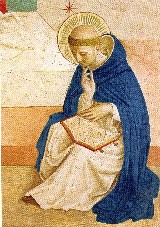One of the issues that disturbs the faithful Catholic in those jurisdictions where it is so celebrated, is the transference of Christ’s Ascension into heaven from its proper day, that Thursday forty days after His Resurrection, to the Sunday following. Like many another initiative that has followed the liturgical revolution after the Second Vatican Council, this one has had the effect of diminishing the force of the Church’s teaching. The diminution occurs through the distortion of the liturgical sequences.
The forty days—which balances the period of Lent—is increased to forty three; the nine days between Ascension Thursday and Pentecost Sunday, the novena in anticipation of the descent of the Holy Spirit, is reduced to six. Lex orandi, lex credendi.
“The Lord’s resurrection filled us with joy on Easter Day; so too his ascension into heaven is the cause of our gladness now, as we commemorate and solemnise the day on which our lowly nature was raised up in Christ above all the host of heaven, above all the ranks of the angels, beyond the height of all the heavenly powers, to the throne of God the Father. We were founded and built on this succession of divine acts, so that the wonder of God’s grace might become even greater; for though everything that seemed to move us to due reverence is removed from our sight, our faith remains constant, our hope firm and our charity warm.
“This is the strength which is given to great minds, this is the light of truly faithful souls, that unhesitatingly they can believe what they cannot see with the eyes of the body, and direct their longings beyond the range of their sight. How could this devotion be born in our hearts, how could anyone be justified by faith, if our salvation were to be found in those things alone which are open to our gaze?
“The visible presence of our Redeemer passed over into sacraments; and so that faith might be more noble and more firm, it is grounded now not on sight but on doctrine. The hearts of those who believe follow this doctrine by a light that comes from above. This faith, which was increased by the Lord’s ascension and strengthened by the gift of the Holy Spirit, could not be dismayed by chains, by prison, by exile, by hunger, by fire, by the claws of wild beasts, or the cruel and ingenious torments of persecutors. All over the world not only men but women, young boys and gentle girls fought for this faith, even to the shedding of their blood. This faith cast out devils, drove away sickness, raised the dead.
“The apostles themselves, though on many occasions they had been strengthened by our Lord’s miracles and instructed by his words, still panicked at the atrociousness of his passion, and only after some hesitation accepted the truth of his resurrection. But his ascension wrought such a change in them that whatever before had been a source of fear now became a source of joy for them. they fixed their minds on Christ’s godhead as he sat on his Father’s right hand. The evidence of their eyes no longer held back their mental vision from contemplating this truth, that the Son descended from his Father without leaving him, and ascended from his disciples without departing from them.
“For the Son of man, dearly beloved, was revealed more perfectly and more solemnly as the Son of God once he had returned to the glory of his Father’s majesty, and in a mysterious way he began to be more present to them in his godhead once he had become more distant in his humanity.
“Then faith gained deeper understanding and by a leap of the mind began to reach out to the Son as the equal of the Father. It no longer needed contact with Christ’s bodily substance, by which he is less than the Father. For though the glorified body remained a body, the faith of believers was being drawn to touch, not with the hand of the flesh but with the understanding of the spirit, the only-begotten Son, the equal of his Father.”
________________________________


![]()


